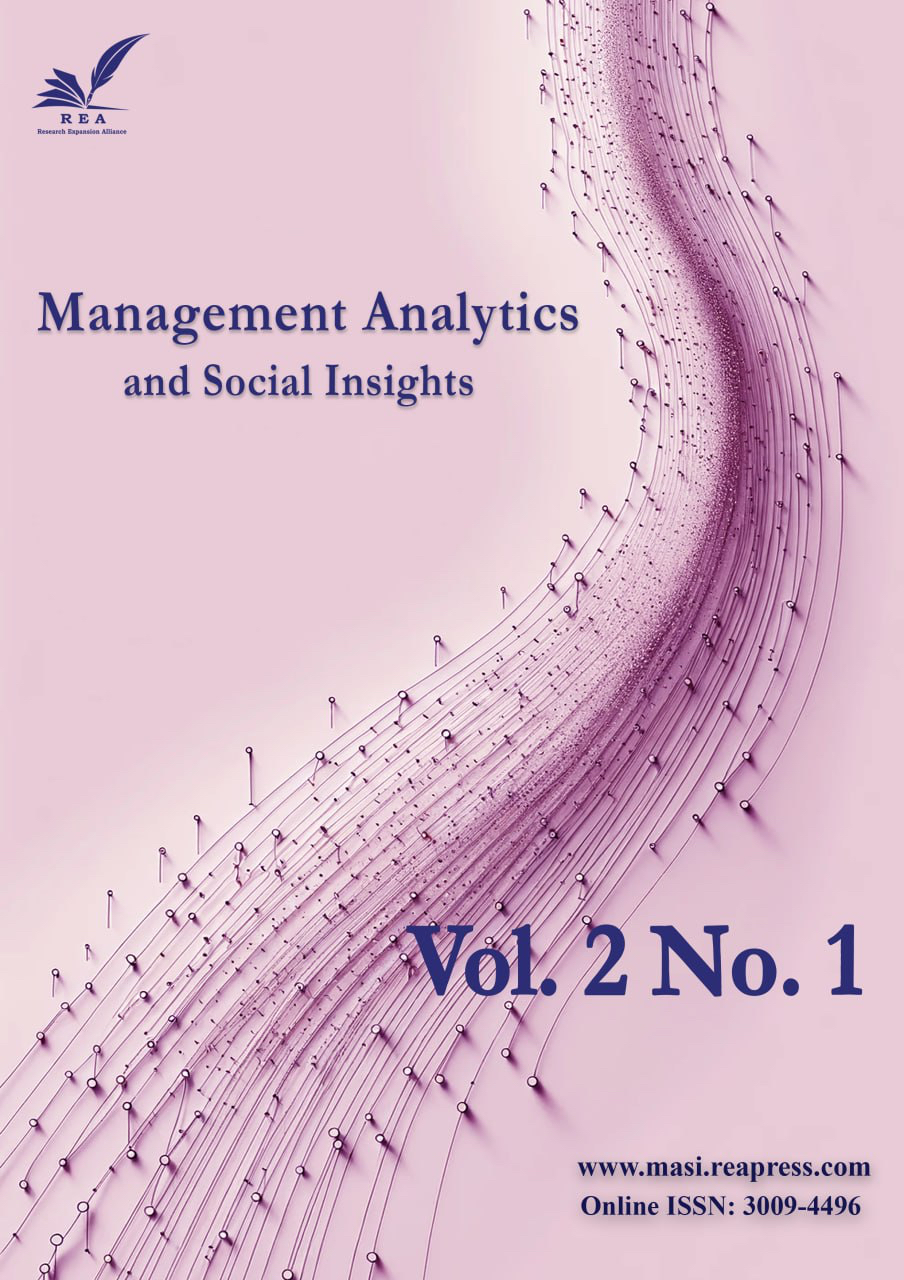Evaluating the Socio-Economic Contributions of the Osun Osogbo Festival on Southwestern Nigeria: Insights for Sustainable Tourism Development
Abstract
The Osun Osogbo Festival is an important cultural heritage event and a well-known tourist attraction with significant social, cultural, and economic importance. This research examines the socio-economic impact of the festival on the local population and community. A concurrent research approach was utilized, combining both quantitative and qualitative data sources. The quantitative data involved distributing structured questionnaires to 189 festival participants using stratified random sampling techniques, as well as surveying 123 hotel operators and 20 taxi drivers. For the qualitative aspect, in-depth interviews were carried out with relevant stakeholders. Quantitative data were analyzed through descriptive statistics (including tables and percentages) and inferential statistics (notably regression analysis). The descriptive analysis revealed that 89.4% support sustainable tourism development, 95.3% are in favor of biodiversity conservation, and 88.9% reported social and community impact. Additionally, the findings indicated that 85% experienced increased sales during the festival. The regression analysis showed a p-value of 0.05, signifying a significant association between community involvement and cultural appreciation. In summary, the Osun Osogbo Festival has had a positive effect on the community. The study suggests that both government and community members should offer financial assistance, capacity-building initiatives, and training programs to help local businesses maximize the economic benefits stemming from the festival.
Keywords:
Festival, Tourism, Socioeconomic, Sustainable tourism, Cultural heritage, Community developmentReferences
- [1] Timothy, D. J. (2023). Africa’s heritage and tourism. In Cultural heritage and tourism in Africa (pp. 1–28). Routledge. https://www.taylorfrancis.com/chapters/edit/10.4324/9781003153955-1/africa-heritage-tourism-dallen-timothy
- [2] Esu, B. (2015). Transforming the Nigeria tourism industry through tourism entrepreneurial development. African journal of business management, 9, 569–580. http://dx.doi.org/10.5897/AJBM2015.7844
- [3] Ndajiya, A., Muhammad, S., & Muhammad, Y. H. (2014). The possible impact of tourism industry on Nigeria economy. Review of public administration and management, 400(3614), 1–9. https://www.arabianjbmr.com/pdfs/RPAM_VOL_3_5/8.pdf
- [4] Ezenagu, N. (2020). Heritage resources as a driver for cultural tourism in Nigeria. Cogent arts & humanities, 7(1), 1734331. https://doi.org/10.1080/23311983.2020.1734331
- [5] Lawrence, U. D. (2021). Harnessing cultural heritage for tourism development in nigeria: A study of the osun-osogbo sacred grove and festival. https://doi.org/10.1080/23311983.2020.1734331
- [6] Ahmad, A., & Balisany, W. (2023). Sustainable tourism management and ecotourism as a tool to evaluate tourism’s contribution to the sustainable development goals and local community. OTS canadian journal, 2, 33–45. http://dx.doi.org/10.58840/ots.v2i5.32
- [7] Adesunloye, D. T., & Arowosafe, F. C. (2023). Willingness of Tourists to pay for ecotourism services in selected ecotourism destinations in south-west, Nigeria. Journal of applied sciences and environmental management, 27(12), 2701–2709. https://www.ajol.info/index.php/jasem/article/view/261611
- [8] Lameed, A. A., Adesunloye, D. T., Shitu, D. S., & Olaniyan, B. D. (2024). Evaluating the influence of ecotourism attributes of Osun Osogbo sacred grove on tourists’ motivations for visiting. World journal of advanced research and reviews, 21(2), 674–682. https://doi.org/10.30574/wjarr.2024.21.2.0304
- [9] Orga, Y. (2016). Tourists’ perception of Osun Osogbo festival in Osogbo, Osun state, Nigeria. Journal of tourism theory and research, 2(1), 40–48. https://doi.org/10.24288/jttr.202830
- [10] Richards, G. (1996). Cultural tourism in Europe. CAB international. https://www.researchgate.net/publication/277040145_Cultural_Tourism_in_Europe
- [11] Org, C. D. (2022). Osogbo climate (Nigeria) data and graphs for weather & climate in osogbo. https://en.climate-data.org/africa/nigeria/osun/osogbo-46659/
- [12] Britannica, T. E. (2001). Mbari mbayo club. encyclopedia britannica. African Arts Club. https://www.britannica.com/art/African-art
- [13] Probst, P. (2011). Osogbo and the art of heritage: monuments, deities, and money. Indiana University Press; Illustrated edition. https://www.google.com/books/edition/Osogbo_and_the_Art_of_Heritage/MLVL1Cz9L8UC?hl=en&gbpv=0
- [14] Rowe, F., Lovelace, R., & Dennett, A. (2024). Spatial interaction modelling: a manifesto. In A research agenda for spatial analysis (pp. 177–196). http://dx.doi.org/10.4337/9781802203233.00019
- [15] Ikporukpo, C. O. (2022). Transportation: A socio-economic geographical perspective. Connel Publications. https://www.google.com/books/edition/Transportation/Ez280AEACAAJ?hl=en
- [16] Carey, H. C. (1865). Principles of social science (Vol. 3). JB Lippincott & Company. https://www.google.com/books/edition/Principles_of_Social_Science/-yAWAAAAYAAJ?hl=en
- [17] Ravenstein, E. G. (1885). The laws of migration. Royal Statistical Society. https://B2n.ir/k33194
- [18] Young, W. J. (1975). Distance decay values and shopping center size. The professional geographer, 27(3), 304–309. https://www.tandfonline.com/doi/pdf/10.1111/j.0033-0124.1975.00304.x
- [19] Reilly, W. J. (1929). Methods for the study of retail relationships. University of Texas Bulletin, Monograph. https://www.scirp.org/reference/referencespapers?referenceid=243518
- [20] Abumere, S. I. (1982). Spatial interaction, gravity parameters and regional development in Bendel state. The nigerian journal of economic and social studies, 24(2), 241–260. https://www.africabib.org/rec.php?RID=190132787
- [21] Zipf, G. K. (2016). Human behavior and the principle of least effort: An introduction to human ecology. Ravenio books. https://www.amazon.com/Human-Behavior-Principle-Least-Effort/dp/161427312X
- [22] Gill, J., & Johnson, P. (2010). Research methods for managers. Sage. https://uk.sagepub.com/en-gb/eur/research-methods-for-managers/book232326
- [23] Oyeweso, S. (2013). Osun osogbo festival: its origin, nature and significance for global yoruba cultural advancement. https://B2n.ir/g28276
- [24] Tseng, M., Lin, C. W. R., Lin, C. W. R., Wu, K. J., & Sriphon, T. (2019). Ecotourism development in Thailand: Community participation leads to the value of attractions using linguistic preferences. Journal of cleaner production, 231, 1319–1329. https://doi.org/10.1016/j.jclepro.2019.05.305
- [25] Oladip, O. S., & Modupe, O. F. (2020). Mpact of tourism products development on osun osogbo sacred grove and badagry slave trade relics. Journal of tourism management research, 7(9), 170–185. https://B2n.ir/s07123
- [26] Afolabi, O. O. (2021). Osun Osogbo grove: the divinisation of water and the contestation of its history. Culture and religion, 22(4), 364–378. https://doi.org/10.1080/14755610.2023.2281369
- [27] Mejabi, E. I. (2021). The context of events in destination development: A case of the osun-osogbo cultural festival. Journal of good governance and sustainable development in africa, 4(3), 1–12. https://journals.rcmss.com/index.php/jggsda/article/view/368
- [28] Aleshinloye, K. D., Woosnam, K. M., Ribeiro, M. A., & Jiang, J. (2017). Authenticity and cultural sustainability at the osun osogbo festival, nigeria [presentation]. Conference proceedings of beyond the waves: the 4th international conference on events (ICE2017) (p. 29). https://stars.library.ucf.edu/cgi/viewcontent.cgi?article=1094&context=ice2017#page=31
- [29] Mejabi, E. I. (2019). The context of events in destination development: A case of the Osun-Osogbo cultural festival. Journal of good governance and sustainable development in Africa, 4(3), 1–12. http://journals.rcmss.com/index.php/jggsda/article/view/368
- [30] Wondirad, A., Tolkach, D., & King, B. (2020). Stakeholder collaboration as a major factor for sustainable ecotourism development in developing countries. Tourism management, 78, 104024. https://doi.org/10.1016/j.tourman.2019.104024


